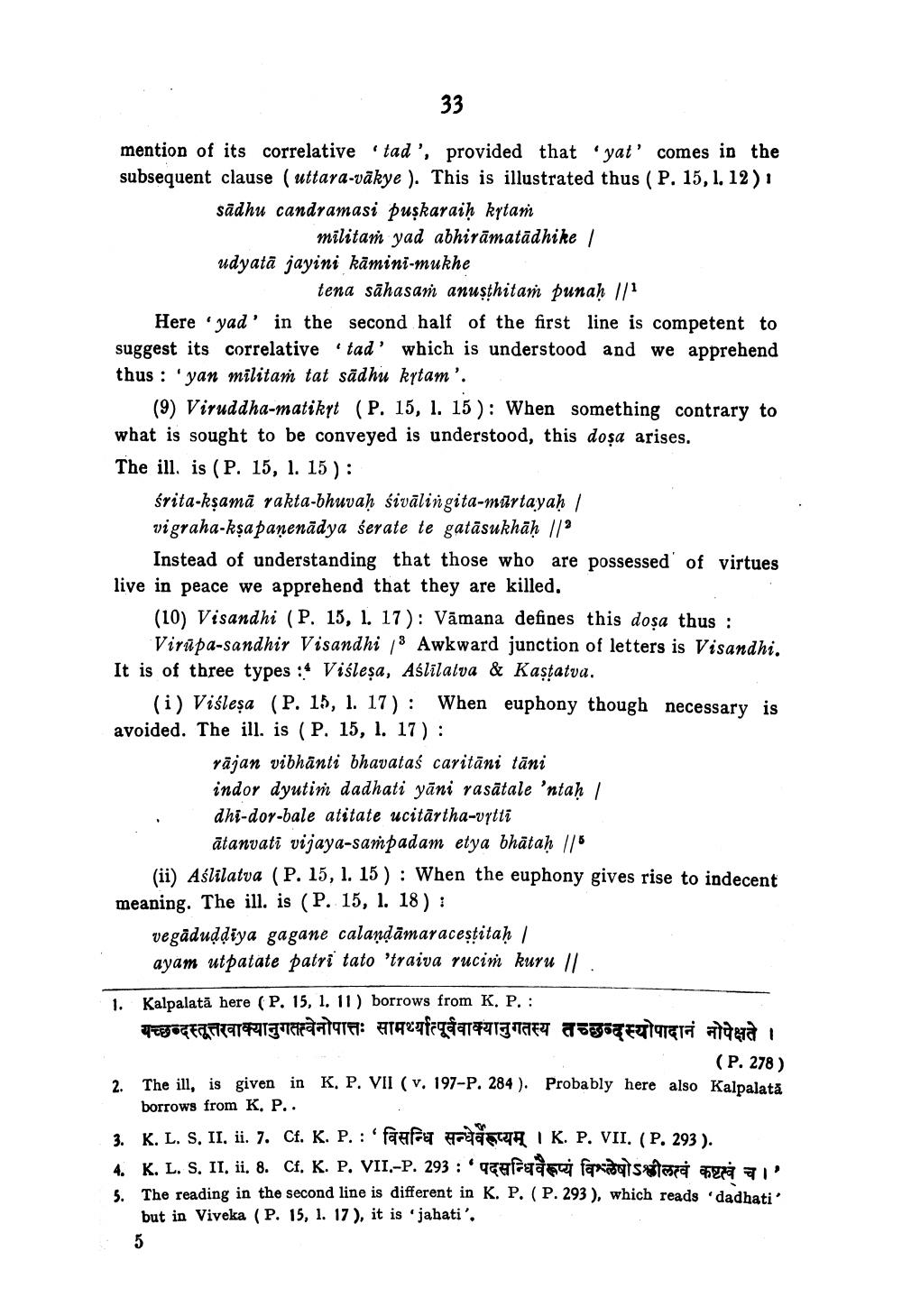________________ mention of its correlative 'tad', provided that yat' comes in the subsequent clause ( uttara-vakye ). This is illustrated thus (P. 15, 1. 12) sadhu candramasi puskaraih krtam militan yad abhiramatadhike / udyata jayini kamini-mukhe tena sahasam anusthitam punah 1/1 Here yad' in the second half of the first line is competent to suggest its correlative tad' which is understood and we apprehend thus : 'yan militam tat sadhu kytam'. (9) Viruddha-matikyt (P. 15, 1. 15): When something contrary to what is sought to be conveyed is understood, this dosa arises. The ill, is (P. 15, 1. 15): srita-ksama rakta-bhuvah sivalingita-murtayah 1 vigraha-ksa panenadya serate te gatasukhah // Instead of understanding that those who are possessed' of virtues live in peace we apprehend that they are killed. (10) Visandhi (P. 15, 1. 17): Vamana defines this dosa thus : Virupa-sandhir Visandhi 19 Awkward junction of letters is Visandhi. It is of three types: Vislesa, Aslilatva & Kastatva. (i) Vislesa (P. 15, 1. 17): When euphony though necessary is avoided. The ill. is (P. 15, 1. 17): rajan vibhanti bhavatas caritani tani indor dyutim dadhati yani rasatale 'ntah / dhi-dor-bale atitate ucitartha-vytti atanvati vijaya-sampadam etya bhatah 1/5 (ii) Aslilatva (P. 15, 1. 15 ) : When the euphony gives rise to indecent meaning. The ill. is (P. 15, 1. 18) : vegaduddiya gagane calandamaracestitah / ayam utpatate patri tato 'traiva rucin kuru // 1. Kalpalata here (P. 15, 1. 11 ) borrows from K. P. : यच्छन्दस्तूत्तरवाक्यानुगतत्वेनोपात्तः सामर्थ्यात्पूर्ववाक्यानुगतस्य तच्छन्दस्योपादानं नोपेक्षते / (P. 278) 2. The ill, is given in K. P. VII (v. 197-P. 284). Probably here also Kalpalata borrows from K. P.. 3. K. L. S. II. ii. 7. Cf. K. P. :'faafa ya TA IK. P. VII. (P. 293 ). 4. K. L. S. II. ii. 8. Cf. K. P. VII.-P. 293 :'quae fansat soda a ' 5. The reading in the second line is different in K. P. (P. 293 ), which reads "dadhati but in Viveka (P. 15, 1. 17), it is 'jahati'.




